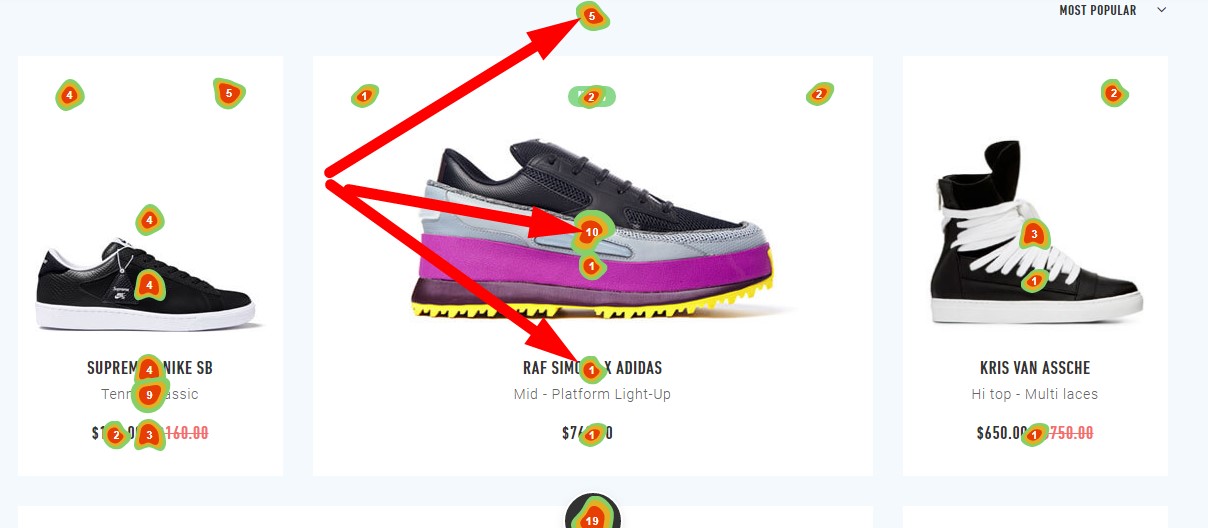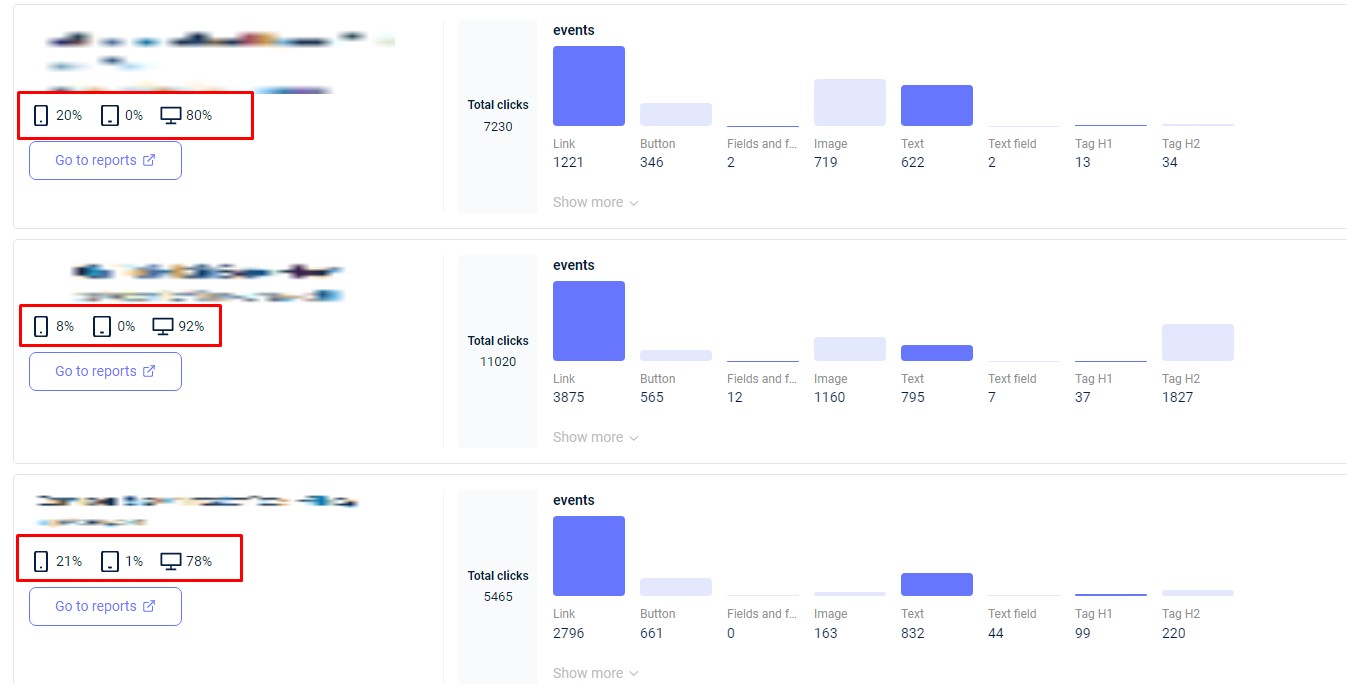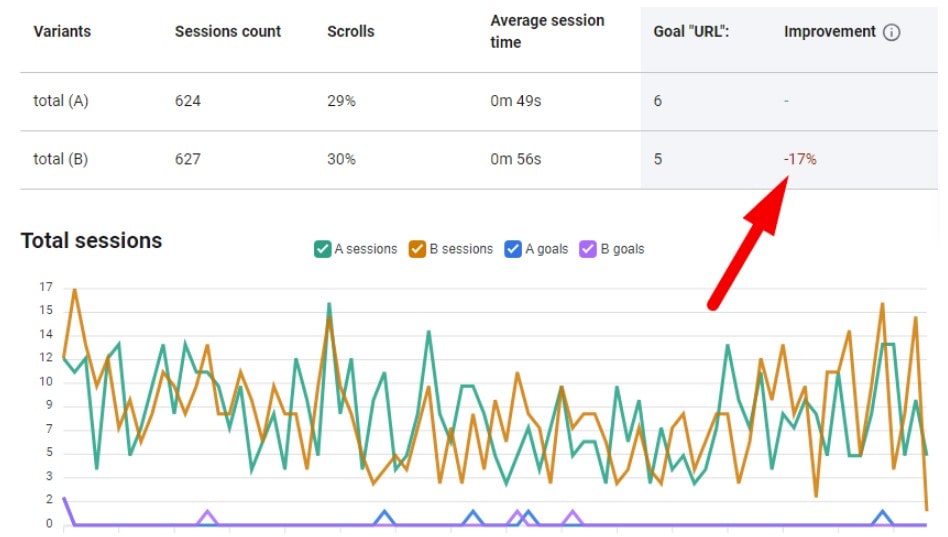Imagine navigating a maze blindfolded—that’s a user experience (UX) with no benchmarking. Frustrating. Is matchmaking lights the path, ensuring users don’t bump into walls of confusion? It’s about ensuring, comparing, and improving the digital journey, ensuring every turn leads to satisfaction. Here at Plerdy, we understand the importance of this process. Our tools and insights help businesses navigate the intricate maze of user experience, ensuring a smooth journey for the user and the provider. In this guide, we’ll dive into the art and science of UX benchmarking, helping you enhance your digital presence efficiently.

Understanding UX Benchmarking
Imagine your website or app is a car in a race where the finish line is ultimate user satisfaction. UX benchmarking is your speedometer and navigation system, guiding you on when to speed up or change course to win the race. It’s not about going fast; it’s about smart.
UX benchmarking is a structured approach to evaluating your digital product’s products by comparing them with set standards, competitors, or past versions of themselves. It helps pinpoint where your UX stands in the race and what you can do to improve its position.
Definition and Importance of UX Benchmarking
At its core, UX benchmarking measures key aspects of the user experience to determine the effectiveness of a website or app. This could include how easily users can complete tasks, their satisfaction level, or how the visual design influences their perception. Tools like Plerdy offer insights into user behavior, making it easier to see where improvements are needed. Establishing benchmarks is crucial because it provides a clear baseline for comparison, allowing you to track progress over time and make data-driven decisions.
Types of UX Benchmarking
There are several approaches to UX benchmarking, each with its purpose. Internal benchmarking compares current results against previous performances within the same organization. External benchmarking, on the other hand, pits your UX against that of competitors or industry standards. Choosing the right type depends on your goals: are you aiming to outperform your past self, or do you want to lead the market?
Understanding UX benchmarking is the first step towards delivering a superior user experience. It’s about making informed decisions that lead to meaningful improvements. With the right approach and tools like those offered by Plerdy, you’re not anticipating the race; you’re set to pace. Remember, in the world of UX, standing still means falling behind. Use benchmarking as your roadmap to continuous improvement and stay ahead of the competition.
Preparing for a UX Benchmark Study

Diving into a UX benchmark study without a plan is like setting sail without a map. You might eventually get somewhere, but it won’t be intended to go. Strategic UX benchmark study preparation yields practical insights and measurable success.
Setting Clear Objectives for UX Benchmarking
Clarify your goals before starting a UX benchmark research. What do you hope to achieve with this study? Are you looking to improve user satisfaction, increase conversion rates, or both? Objectives should be SMART: Specific, Measurable, Achievable, Relevant, and Time-bound. With clear objectives, you will know whether the changes you eventually make are effective.
Choosing the Benchmarking Type
Once your objectives are set, deciding on the type of benchmarking comes next. Will you conduct internal benchmarking to measure progress over time, or is external benchmarking against competitors or industry standards more relevant to your goals? Each type offers unique insights, and the choice depends on what you aim to learn from the study. For instance, internal benchmarking can show growth or decline in performance, while external benchmarking can highlight where you stand in the marketplace.
A solid framework is essential for UX benchmark studies. This includes selecting the right metrics that align with your objectives and designing a methodology that accurately captures the user experience. Tools and platforms like Plerdy can be invaluable in this phase, providing the means to effectively gather and analyze user interaction data.
As you finalize preparations for your UX benchmark study, remember to consider the logistics of data collection. Will you use surveys, analytics, usability testing, or a combination of these methods? Ensure that your team is aligned on the approach and that you have the necessary tools and permissions.
It’s essential to keep your focus sharp and your strategy flexible. Your preparations now lay the groundwork for the following insights and improvements. A well-prepared UX benchmark study is more than just a set of tasks; it’s a router to a better user experience. As you embark on this journey, remember that the goal is to collect data and translate that data into actions that enhance your digital product’s appeal.
Conducting the Benchmarking Study for UX Benchmarking

Embarking on a UX benchmarking study is like conducting a detailed health check-up for your digital product. Just as a doctor uses specific tools and follows a procedure to diagnose and recommend treatment, so must you apply a systematic approach to uncover the strengths and weaknesses of your user experience. It examines how well your product fits user needs and competes with others.
Designing the Study
The blueprint of your UX benchmarking study hinges on thoughtful design. This stage requires selecting tasks that users commonly perform or areas where you suspect friction. Each task should represent the broader user experience and be tied directly to your objectives. Consider utilizing task scenarios that mimic real-world use cases to ensure the data you collect is grounded in reality. Crafting a study design that is both comprehensive and focused will help you gather meaningful insights that are directly actionable.
Gathering and Analyzing Data
With your study designed, the next step is to collect and sift through the data. This involves observing users navigating your product, tracking their actions, and listening to feedback. Tools such as Plerdy can provide invaluable data on user behavior, highlighting where users struggle and where they find delight. But gathering data is only half the battle; the critical work lies in analysis. Look for patterns in the data that point to broader trends. Are there particular tasks where users consistently underperform? Is there qualitative feedback that suggests a common area of frustration? Analyzing the data with a critical eye will help you identify actionable insights that can drive meaningful improvements to your UX.
As you conduct the benchmarking study, remember to keep an open mind. The goal is to uncover truth and insight, not to validate preconceived notions about your product. This requires a willingness to listen to what the data and your users tell you, even if it’s not what you expect to hear.
It’s essential to synthesize the findings into a coherent narrative to guide your next steps. This involves identifying areas for improvement and prioritizing them based on their impact on the user experience and your business objectives. A successful UX benchmarking study doesn’t just highlight where you are today; it provides a roadmap for where you need to go tomorrow. It’s an intensive process that, when done regularly, can keep your product on the path to continuous improvement and competitive advantage.
Interpreting Benchmarking Results

Diving into the sea of data from a UX benchmarking study without a clear plan is like trying to find treasure without a map. You know the value is there, but where do you start? Interpreting benchmarking results is the compass that guides you to actionable insights and strategic improvements. It’s about turning raw data into a clear narrative that informs your next steps.
Analyzing Study-Level Metrics for UX Benchmarking
Once your study is complete, you’ll find a wealth of data points. Key metrics such as user satisfaction scores, task success rates, and time on task offer a high-level view of your product’s product’s success. To make sense of these numbers, compare them against your initial objectives and benchmarks. This comparison might reveal areas where your product excels or falls short, providing a clear focus for your efforts. For example, if user satisfaction has increased since your last study but remains below industry standards, you know there’s there’s to do.
Understanding Task-Level Metrics for UX Benchmarking
Beyond the broad strokes, dive into the details of task-level metrics. This granular data sheds light on specific interactions within your product. Look for patterns where users succeed or struggle, and listen to their feedback for clues on enhancing their experience. A particular feature consistently needs to be clarified, or a process that should be straightforward is taking users too long. These insights are goldmines for targeted improvements.
As you interpret the results, keep your business goals and user needs at the forefront. The data you’ve gathered is a means to an end, not an end. Understanding the data story and making informed decisions to advance your product is key.
The goal is to transition from data to action. Prioritize the findings based on their potential impact and feasibility, then map out a plan for addressing them. Whether it’s existing features, overhauling a problematic workflow, or introducing new functionality, the insights from your benchmarking study should guide your next steps. Enhancing the user experience to meet strategic goals is the goal. Doing so will improve your product and strengthen your position in the competitive landscape.
Implementing Changes and Continuous Improvement

Realizing the need for change is like acknowledging that your car needs a tune-up to perform better. Implementing changes and continuous improvement in the context of UX is akin to fine-tuning your vehicle for optimal performance, ensuring it runs smoothly and efficiently for the long haul. This phase is about taking insights from your UX benchmarking study and turning them into actionable steps that enhance user satisfaction and drive business success.
Prioritizing Findings for Implementation
With a wealth of data at your disposal, the first step is to prioritize which findings to act on. Not all insights will have the same impact on your user experience or business goals. Use a framework like the Eisenhower Matrix to categorize findings based on their urgency and importance. Focus first on quick wins—impactful and easy-to-implement changes. This method concentrates efforts where they can make the most effect without wasting resources.
Establishing a Cycle of Continuous Improvement
The journey towards UX excellence doesn’t include the implementation of changes. Instead, it begins an ongoing cycle of evaluation, insight, and enhancement. Continuous improvement involves reviewing UX benchmarks to evaluate changes and find new opportunities. This iterative process lets you stay ahead of user expectations and market trends. Tools and methodologies that facilitate this cycle, such as A/B testing and user feedback platforms, are invaluable assets in this endeavor.
The implementation phase is where strategic planning meets real-world application. Documenting the rationale behind each change, along with expected outcomes and metrics for success, is crucial. This documentation will be invaluable for future benchmarking studies, providing a clear record of what was done and why.
Remember that implementing changes based on UX benchmarking is not a one-time task but an ongoing commitment to your users and your product. Each iteration brings you closer to delivering an exceptional user experience that meets user needs and business objectives. Embrace the cycle of continuous improvement as a core part of your UX strategy, and you’ll find that even small adjustments can lead to significant enhancements over time. This approach keeps your product competitive and ensures it evolves harmoniously with your users’ customers and expectations.
Case Studies and Best Practices of UX Benchmarking
Learning from the success and hurdles of others is like having a roadmap in uncharted territory. In the realm of UX, case studies and best practices serve as beacons, guiding us through the complexities of user experience enhancement. Examining real-world applications and distilling the essence of what works (and what doesn’t) doesn’t apply these lessons to our own UX strategies, avoiding common pitfalls and embracing proven methodologies.
Real-World Applications
Consider the transformation of a leading e-commerce platform that revamped its checkout process. They saw a significant decrease in cart abandonment rates by simplifying the steps and incorporating clear progress indicators. This case study illustrates the importance of streamlining user flows to enhance satisfaction and conversion rates. Similarly, a mobile app’s adoption of personalized recommendations based on user behavior led to increased engagement and user retention. These examples underscore the impact of user-centric modifications grounded in solid UX principles.
Lessons Learned and Best Practices for UX Benchmarking
From these case studies, several best practices emerge:
- Continuous user feedback is invaluable. Engaging with users through surveys, interviews, and usability testing can uncover insights that drive impactful changes.
- Simplicity and clarity in design always prevail. Users should not have to guess their way through your product.
- Implementing changes should be iterative, allowing flexibility and adaptation based on ongoing user feedback and benchmarking results.
The journey of UX improvement is paved with the learnings from those who’ve navwho it before. Case studies inspire and provide concrete evidence of the benefits of adopting a user-centric approach. Let these real-world applications and best practices light your path as you forge ahead. The goal of UX is not just to meet expectations but to exceed them, creating experiences that delight and retain users. By learning from the successes and challenges of others, you can accelerate your progress toward this goal, making every interaction with your product a positive one.
Conclusion about UX Benchmarking
Embarking on the UX benchmarking journey gives you the insights to steer your digital product toward unparalleled user satisfaction. This guide has laid the groundwork, from understanding the basics to implementing changes for continuous improvement. Yet, the path to UX mastery doesn’t doesn’t. Dive deeper into the world of user experience with more articles from Plerdy. Each post is a stepping stone to elevating your product’s product’s appeal. Ready to transform your insights into action? Explore Plerdy’s tools designed to enhance your website. Let’s turn Let’s into delightful user journeys together.
